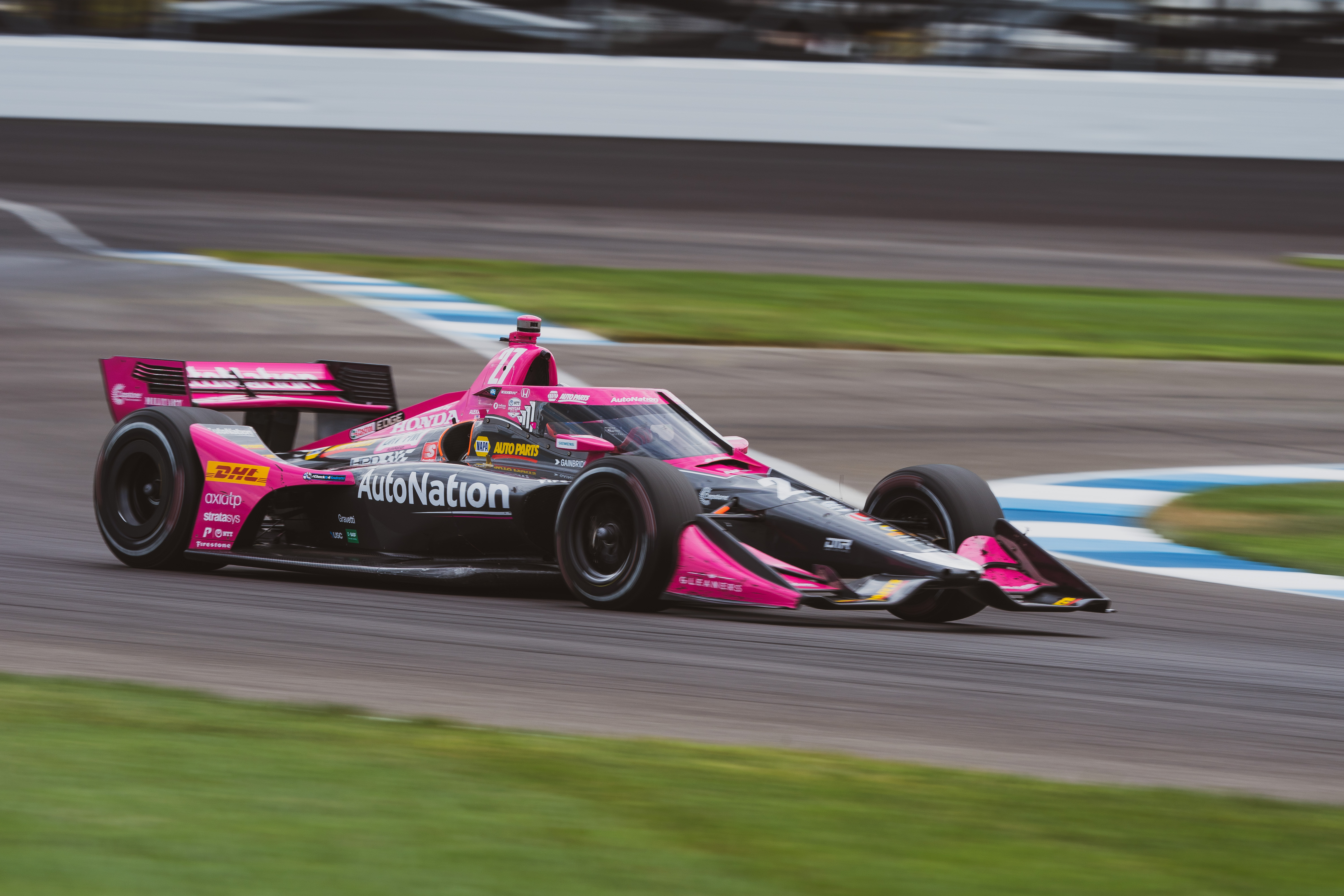After signing a long-term deal to remain committed to supplying power units in the IndyCar series, Honda says it is ready to help a third manufacturer “de-risk” joining the championship in the future.
On Saturday, IndyCar, Honda Performance Development and Chevrolet announced a long-term deal to introduce a 2.4-litre engine for the 2023 season – delayed a year due to the lead times and the coronavirus pandemic’s effects on those.
Both Chevrolet and Honda have discussed how important a third manufacturer joining the series would be and many have been rumoured, including Ferrari.
Speaking during the announcement, IndyCar president Jay Frye said: “We came up with our five-year plan in 2016, which we’re excited about, through 2028, so a really long runway.
“So it was something where another OEM partner would not necessarily be a luxury, it would end up becoming a necessity because we have so many new teams coming into the sport.
“So yeah, we’re very bullish about new teams. We know there’s some that are currently exploring the series, so it’s still very possible.”
IndyCar secured a coup in maintaining Honda’s 27-year involvement in top-level single-seater racing in the US – on the same weekend the Formula 1 programme – which is run out of a separate hub in Japan – confirmed it would leave that championship at the end of 2021 as it focuses on electric-powered cars.
HPD president Ted Knaus called the timing of the two announcements “serendipity”.
Not only has the American-arm of Honda committed to a multi-year deal following 2023 in IndyCar, Klaus confirmed it was willing to help any other manufacturer joining the series to acclimatise.
“We would, as HPD, support IndyCar and the third manufacturer just to understand some of the transition they might have to make,” said Knaus, who will step down and hand the HPD presidency to engineer and ex-Ferrari, Mercedes and Cosworth’s David Salter in December.
“Certainly would welcome them with open arms.
“We’re not going to share all our IP [intellectual property], but to a certain extent we can help them understand the risks and essentially de-risk some of the changes they would have to take on that are unique to this series and help them really appreciate the value, what we see in it.
“I think we’ve earned other manufacturers to really look at us [IndyCar as a championship] seriously, and we’d like to have that conversation, and we’ll do everything we can to support that conversation and support IndyCar.”

Honda celebrated the announcement with a second and a third in the second race of the Harvest Grand Prix weekend at Indianapolis, while it also holds a lead in the manufacturer battle.
Fresh off a fourth straight podium, Andretti Autosport’s Alexander Rossi said: “I’m thrilled. Obviously my relationship with Honda is very important to me personally and to Andretti Autosport. It’s great news.
“It’s a huge testament to the work HPD has done to obviously win the 500 this year, to be in with a shot to win the championship this year, winning the manufacturers championship last year.
“It was a rough couple years there, aside from the month of May, so it’s good that we’ve been able to elevate the performance globally as a manufacturer.
“It’s great news for the future of the sport.”
The General Motors president Mark Reuss was also in attendance representing Chevrolet at the press conference and has a long history and background in motorsport.
He added that an extra manufacturer was “absolutely needed” as part of a “flywheel effect” for IndyCar.
“I think it’s absolutely needed, and I think it would be fabulous, whoever that manufacturer may be,” Reuss said.
“We would love that, and I think – I know that it would be for the growth of the series, for the interest in the series. That’s the flywheel effect, right, when you have something really, really good, which we do, how can you make it better.
“Another manufacturer would just keep growing everything, and that’s important.”
Next on the agenda for the IndyCar Series is working through the costs of the new engine which will produce over 900bhp and will have a KERS system.

It was due to introduce a new chassis at the same time, but could delay that decision or release the new chassis in stages to spread costs for teams.
But the power unit mounting points will remain the same on this engine, meaning IndyCar could stick with the current chassis through 2023 if it wanted to do so.
Frye was asked about the cost to introduce the new power unit – something at the forefront of teams minds’ with the current and future climate often appearing bleak due to the pandemic.
“Well, any time we do anything, economics matter in a big way,” said Frye.
“Especially with the teams and our manufacturer partners, so that’s something – one of the criteria data points that we’ll look at as we go forward on what it does cost, how it works, how we spread it out over a long runway now, which actually helps.
“So cost matters, and that will be a big factor in what we do going forward.”





